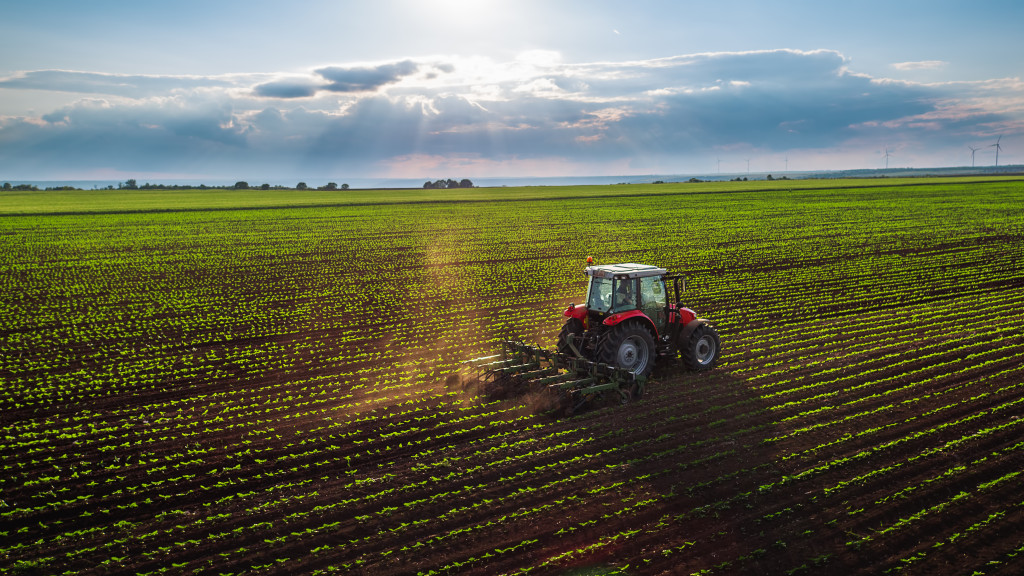- Farmers need support and assistance initiatives to help boost productivity and achieve their goals.
- Organizations provide low-interest loans, grants, and scholarships to help farmers purchase necessary resources like equipment, fertilizers, and seeds.
- Farmers are encouraged to stay up-to-date with the latest trends and technologies in farming by attending webinars and workshops.
- Support initiatives provide subsidized prices for quality seeds, fertilizers, chemicals, and other inputs to maximize yields and profits.
- By empowering farming communities with these resources, food security, economic stability, and the overall well-being of farmers can be ensured.
The number of U.S. farms peaked at 6.8 million in 1935. But fell sharply until the early 1970s due to increasing productivity in agriculture and nonfarm employment opportunities. Although the number of farms declined since 1982, the decline has slowed down. The most recent survey shows 2 million farms in 2022, a decrease from 2.20 million in 2007.
Farming is a noble profession and a crucial pillar of the global economy. However, unpredictable weather patterns, volatile market prices, and limited access to resources can often impede farming communities from maximizing their productivity.
Nevertheless, the farming community can overcome these obstacles by leveraging support and assistance initiatives or organizations tailored to their unique needs. This blog post will delve into how farming communities can tap into these resources to boost productivity and achieve their goals.

Access to Financing
One of the major challenges facing farming communities is limited access to financing. Farming requires a significant amount of investment. Farmers may not have the resources to invest or expand their operations.
Farmers’ Needs
However, various initiatives and organizations provide financing solutions tailored to farmers’ needs. These include low-interest-rate loans, grants, and scholarships. These financing solutions assist farmers in purchasing equipment, seeds, fertilizers, inputs, and other necessary components to run their operations. Empowering farmers with financing boosts productivity and helps build sustainable farming communities in the long run.
Purchase Equipment
To reduce expenses on equipment investments, farmers should consider purchasing secondhand farm equipment whenever needed. They can look for a reputable seller of secondhand harvesters, plows, fertilizer spreaders, or tractors. For instance, farmers should look for affordable used tractors for sale if their tractors cannot be fixed. This helps them to minimize their expenses while ensuring that the equipment they purchase is of good quality.
Access to Training and Education
Another critical factor affecting productivity in farming communities is the lack of training and education. Farming is a complex field that requires constant learning and innovation to keep up with ever-changing dynamics.
Informed Decisions
Farmers need to understand new technologies, market trends, and environmental conditions to make informed decisions. Organizations and initiatives provide farmers continuous training and education programs to equip them with the skills and knowledge to excel in their operations. These initiatives offer farmers a platform to network, learn from other farmers, and share best practices.
New Farming Techniques
Access to new farming techniques is essential for farmers to maximize their productivity. Farmers can reduce costs and increase yields significantly by leveraging the latest technologies and practices. Various organizations provide resources such as webinars and workshops that disseminate information about the latest innovations in farming.
Access to Good Quality Seeds and Inputs
Access to good quality seeds and inputs is a game-changer in farming. Quality seeds ensure higher yields and better quality produce, which translates to more earnings and high-profit margins.
Initiatives for Better Seeds
However, getting quality seeds and inputs is often a challenge for farmers. Support initiatives provide high-quality seeds, fertilizers, chemicals, and other inputs at subsidized prices. These initiatives empower farmers to access good quality inputs that would otherwise be expensive if they were to purchase directly from different vendors. In turn, it increases yields and profits, which ultimately boosts productivity.

Access to Innovation and Technology
Innovation and technology are significant drivers of productivity in farming. Advancements in technology can improve the efficiency of operations, reduce input costs, and reduce the risk of crop failure. Initiatives and organizations invest in developing new technologies and innovations tailored to farmers’ needs.
Farming Efficiency
These advancements include irrigation systems and better information systems. Technology improves farming efficiency and allows farmers to make informed decisions that impact their operations positively. Access to these technologies can help farmers increase their production and gain access to new markets.
Stay Updated
In addition, there are initiatives in place to provide farmers with tools that will enable them to stay up-to-date with the latest technological advancements. These programs often involve providing training and equipment that equip smallholder farmers with the knowledge and resources needed to adopt new farming techniques.
Farming communities face numerous challenges that hinder their productivity. However, initiatives provide various solutions to help farmers overcome these challenges. Support initiatives empower farmers to make better decisions and maximize their productivity. The farming community must leverage these resources to achieve their goals and build sustainable farming ecosystems. By empowering farming communities, they can ensure food security, promote economic stability, and improve the overall well-being of farmers.

